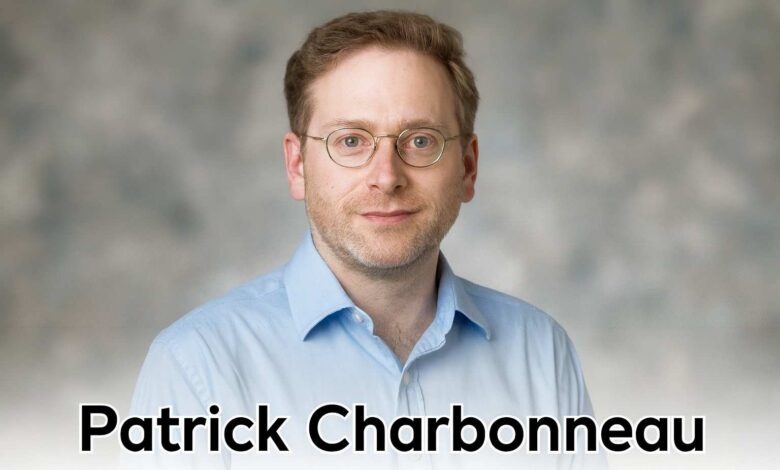Patrick Charbonneau: A Brilliant Mind in Science with Triumphs and Challenges
Exploring the Life, Career, and Impact of a Professor of Chemistry and Physics at Duke University

Introduction
Patrick Charbonneau is widely admired in the academic world for his contributions to chemistry, physics, and the study of disordered systems. Known for his dedication to research and his role as a Professor of Chemistry and Physics at Duke University, he has shaped both scientific inquiry and the education of future leaders in science. His work stands as an inspiring example of how curiosity and persistence can open doors to knowledge. At the same time, his path reflects the difficulties of studying complex problems, such as the glass transition, that have challenged researchers for decades.
In this article, we explore the journey of Patrick Charbonneau from his education in Canada to his current role at Duke University. We will discuss his academic career, his groundbreaking research, the awards and recognition he has earned, and his lasting influence on the scientific community. Along the way, we will present both the positive accomplishments and the challenges he has faced in pushing the boundaries of science.
Quick Bio
| Attribute | Details |
|---|---|
| Full Name | Patrick Charbonneau |
| Nationality | Canadian |
| Birthplace | Montreal, Canada |
| Education | B.Sc. in Chemistry (McGill University, 2001); Ph.D. in Chemical Physics (Harvard University, 2006) |
| Postdoctoral Fellowship | Marie-Curie Fellow at AMOLF, Amsterdam |
| Current Role | Professor of Chemistry and Physics at Duke University |
| Notable Honors | NSF CAREER Award, Sloan Research Fellowship, Ralph E. Powe Award, Fellow of the American Physical Society |
| Research Focus | Soft matter physics, glass problem, protein crystallization, colloidal assembly |
Early Life and Education
Patrick Charbonneau was born in Montreal, Canada, where his passion for science began to flourish. His strong academic background led him to McGill University, where he completed his Bachelor of Science degree in Chemistry in 2001. His time at McGill allowed him to develop a foundation in chemical principles and an appreciation for the challenges of scientific exploration.
Following this success, he pursued a Ph.D. in Chemical Physics at Harvard University, one of the most prestigious institutions in the world. In 2006, he completed his doctorate, gaining recognition for his insightful approach to theoretical and computational physics. His drive to understand complex systems prepared him for a career that would cross disciplinary boundaries and lead to international recognition.
Academic Career at Duke University
In 2008, Patrick Charbonneau joined Duke University as a faculty member. Since then, he has become a respected leader in both the Department of Chemistry and the Department of Physics. His position as Professor of Chemistry and Physics at Duke University reflects his ability to bridge multiple fields and inspire innovation across disciplines.
At Duke, he also serves as Director of Graduate Studies for the University Program in Materials Science and Engineering. This role places him at the heart of mentoring young scientists, designing academic programs, and ensuring that students receive the guidance they need to succeed. His academic leadership demonstrates his commitment not only to research but also to education and community building.
Research Contributions
The Glass Problem
One of Patrick Charbonneau’s most important areas of study is the glass problem. This scientific puzzle focuses on understanding how liquids become glasses—a process that has challenged physicists and chemists for generations. His work combines theoretical models with computer simulations to shed light on this mystery. By advancing our knowledge of glassy states, Charbonneau has influenced both fundamental science and practical applications, such as materials engineering.
Soft Matter and Statistical Physics
Another major focus of his research lies in soft matter physics. This field involves studying materials like colloids, gels, and polymers. Through careful simulations and theoretical models, Charbonneau has explored how these materials behave under different conditions. His contributions to statistical physics have helped explain how disorder arises in matter and how scientists can use this knowledge to design better materials.
Protein Crystallization and Colloidal Assembly
Charbonneau has also made significant advances in understanding protein crystallization, which plays an important role in biology and medicine. By studying how proteins form ordered structures, he has contributed to progress in structural biology. In addition, his research into colloidal assembly has deepened our understanding of how microscopic particles can organize themselves under external fields.
Awards and Recognition
Patrick Charbonneau’s dedication has been recognized through several prestigious awards. He received the National Science Foundation CAREER Award, which supports promising early-career scientists. He was also named an Alfred P. Sloan Research Fellow, highlighting his potential as a leading figure in physics and chemistry.
Furthermore, he earned the Ralph E. Powe Junior Faculty Enhancement Award from Oak Ridge National Laboratory, further emphasizing the importance of his contributions. His service to the scientific community has also been honored, as he has been repeatedly recognized as a top reviewer for journals and named a Fellow of the American Physical Society.
Academic Leadership and Editorial Role
Beyond research and teaching, Charbonneau has made his mark through service. He is the Lead Editor for Physical Review E, a prominent scientific journal. This position places him at the center of publishing cutting-edge research in statistical physics, complex systems, and soft matter. His editorial work allows him to shape the direction of scientific communication while upholding the highest standards of peer review.
Legacy and Impact
Patrick Charbonneau’s legacy lies in his ability to connect complex theories with practical insights. His contributions to the study of glasses, soft matter, and protein crystallization have made him a respected authority in his field. By combining rigorous research with mentorship, he has inspired students and colleagues alike.
His work also highlights the challenges of science. The glass problem, for example, is a question that continues to puzzle even the most brilliant minds. Yet his persistence demonstrates that progress often comes through patience and collaboration. In this way, his career illustrates both the triumphs and the struggles of scientific discovery.
Conclusion
Patrick Charbonneau is a figure of remarkable influence in the fields of chemistry and physics. His role as a Professor of Chemistry and Physics at Duke University, combined with his leadership in research and education, has left an enduring mark on the scientific community. From his education in Montreal and Harvard to his impactful career at Duke, his journey reflects determination, brilliance, and a passion for solving some of the most difficult problems in science.
Though his work involves great challenges, the recognition he has received shows that his contributions are both valued and respected. His legacy will continue to shape future generations of scientists who aspire to follow in his footsteps.
Frequently Asked Questions
Q1: Who is Patrick Charbonneau?
Patrick Charbonneau is a Canadian scientist and Professor of Chemistry and Physics at Duke University, known for his research on the glass problem, soft matter, and protein crystallization.
Q2: What is Patrick Charbonneau’s main area of research?
His main research focuses on disordered systems, especially the glass problem, along with soft matter physics, protein crystallization, and colloidal assembly.
Q3: What awards has Patrick Charbonneau received?
He has received several honors, including the NSF CAREER Award, Sloan Research Fellowship, Ralph E. Powe Award, and election as a Fellow of the American Physical Society.
Q4: What role does he hold at Duke University?
He serves as a Professor of Chemistry and Physics and as Director of Graduate Studies for the University Program in Materials Science and Engineering.
Q5: Why is Patrick Charbonneau’s work important?
His work provides fundamental insights into the behavior of disordered systems and soft matter, influencing both theoretical science and practical applications in materials and biology.



